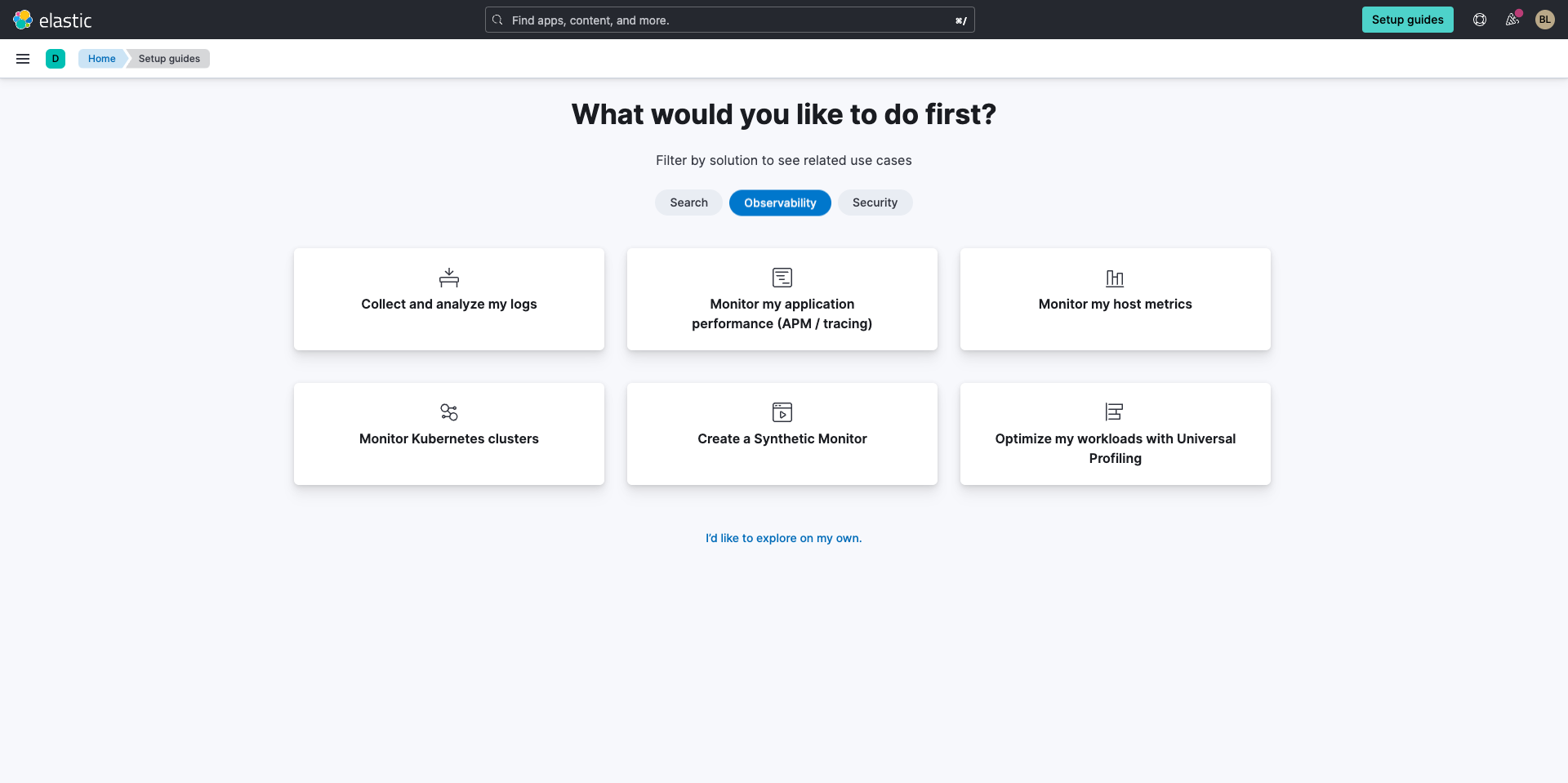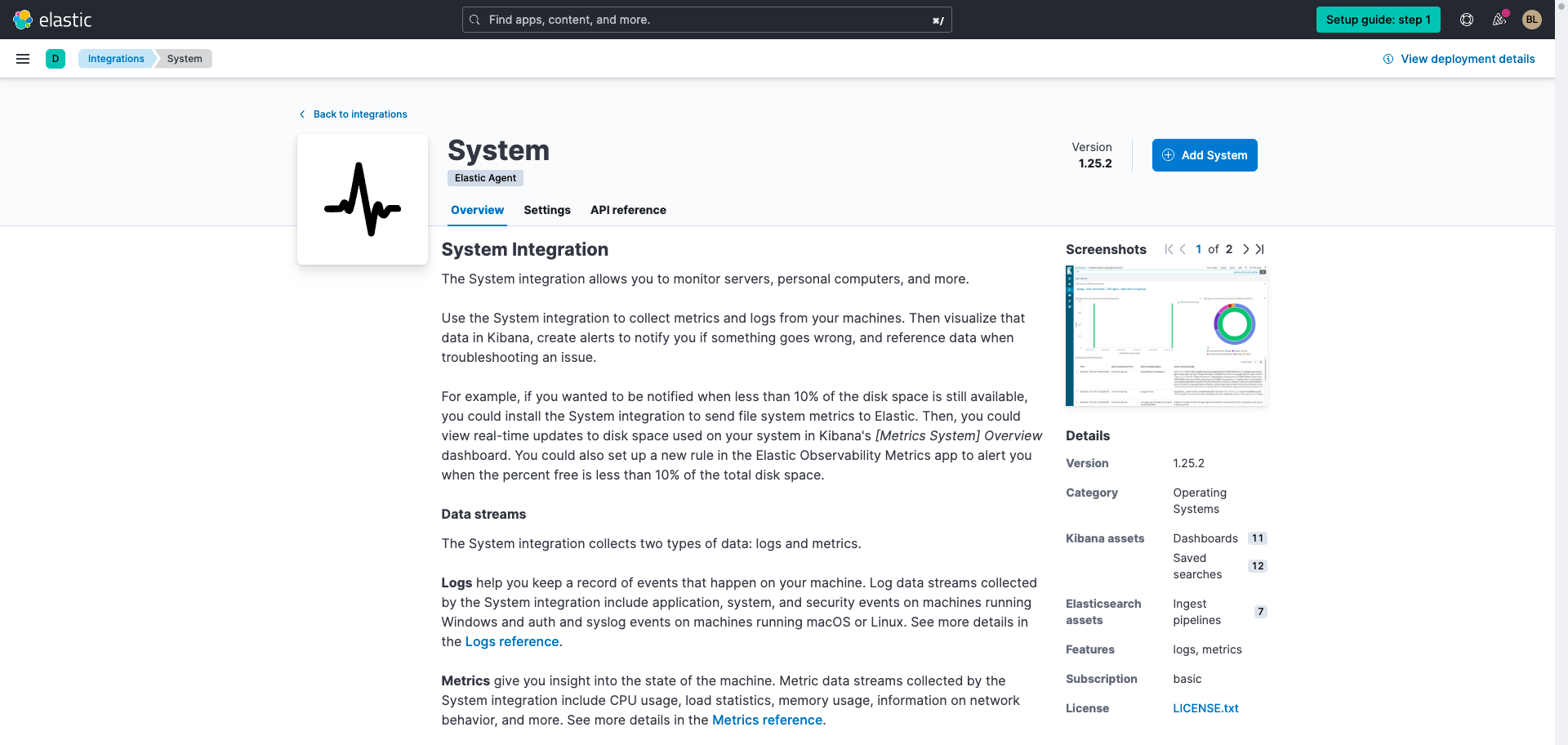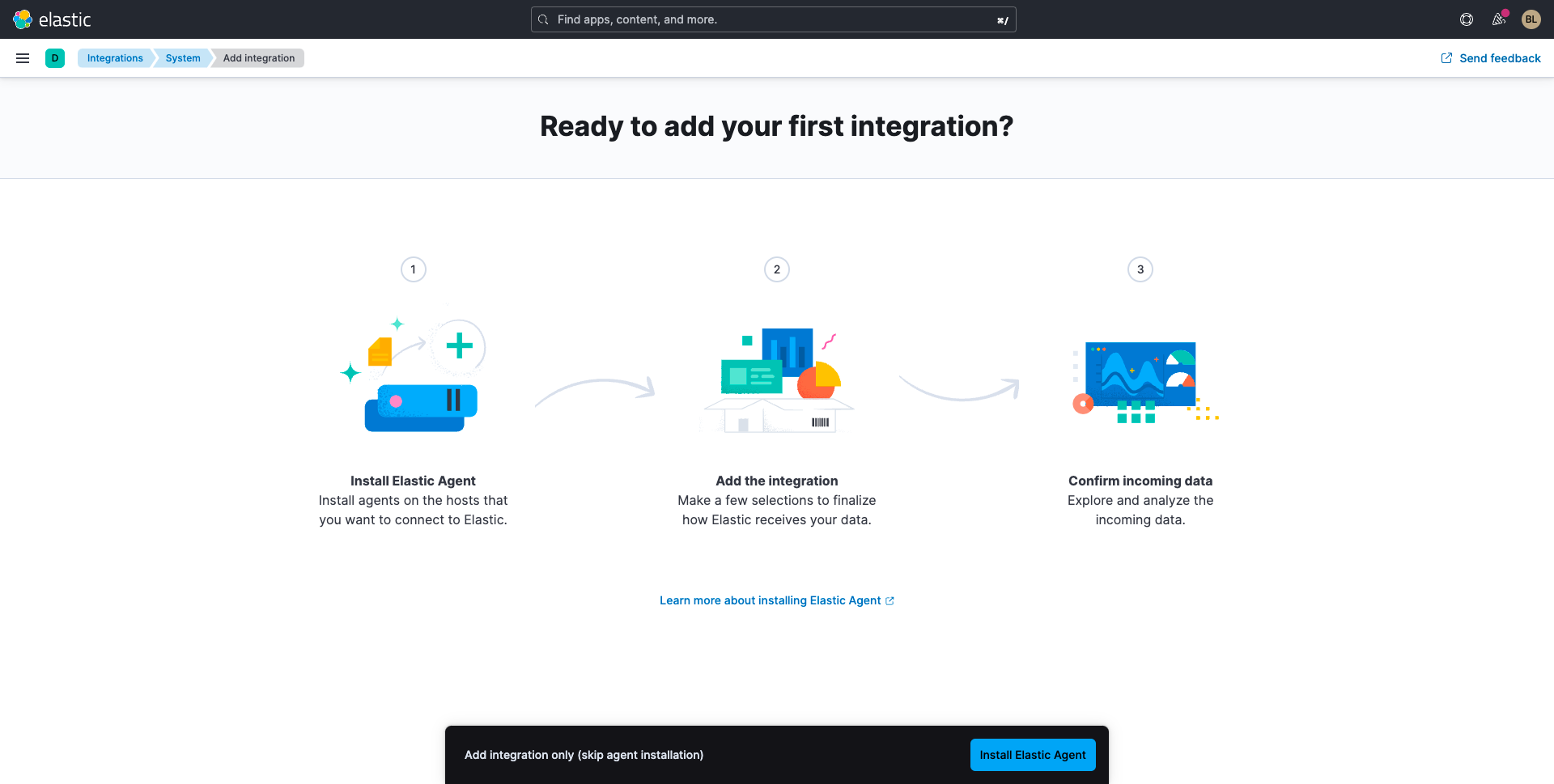Elastic Observability: Recopilación y análisis de logs
Visión general
Introducción a Elastic Observability
Familiarízate más con Elastic Observability y accede a una visión general sobre cómo ingestar, ver y analizar logs de clientes de tus aplicaciones mediante Elastic Cloud. Conoce cómo puedes modernizar aplicaciones y adoptar el cloud con confianza.
Demostración interactiva: Visión general de monitoreo de logs
Echa un vistazo a esta demostración interactiva para hacer un recorrido de lo que puedes experimentar cuando aprovechas Elastic Observability para el monitoreo de logs.
Mejores prácticas de gestión de logs y aprovechamiento de logs para una resolución de problemas más rápida
Conoce los beneficios de una solución de gestión de logs, los desafíos que probablemente te encuentres en el camino y algunos consejos para ayudarte a evitar los errores que suelen aparecer cuando comienzas o intentas mejorar tu agregación de logs.
Incorporar tus datos
Inicio rápido de logging
En esta serie de inicio rápido de 3 pasos, descubrirás cómo ingestar, ver y analizar logs personalizados desde tus aplicaciones usando Elastic Cloud. Los logs son una pieza clave en la creación de observabilidad unificada de tu ecosistema.
Crear una cuenta de Elastic Cloud
Comienza con una prueba de 14 días. Dirígete a cloud.elastic.co y crea una cuenta, luego sigue este video para conocer cómo iniciar tu primer stack de Elastic en cualquiera de las más de 50 regiones de todo el mundo en las que ofrecemos soporte.
Una vez que tu despliegue esté completo, en la pestaña Observability (Observabilidad), selecciona Collect and analyze logs (Recopilar y analizar logs).
Ingestar todos tus datos de telemetría
Si esta es la primera vez que usas Elastic, deberás agregar un agente, que es la forma preferida para ingresar los logs. Sugerimos comenzar por la integración de los logs System (Sistema). Simplemente escribe "System" (Sistema) en la búsqueda para seleccionarlo.

Cuando seleccionas Add System (Agregar sistema), se te solicitará hacer el paso a paso por cómo ingestar los logs del sistema.

Primero, comenzarás por agregar un agente de Elastic, agregarás y configurarás tu integración, y luego comenzarás a enviar datos de logging a Elastic.
Si quedas atascado, echa un vistazo a este recorrido guiado para instalar la integración System (Sistema).
Mira estos ejemplos de cómo usar estas integraciones:
Cómo trabajar con Elastic Observability
Obtener más de los datos no estructurados
Conoce las mejores prácticas para trabajar con datos de log no estructurados y cómo dar los primeros pasos. Luego, una vez que hayas ingestado los datos, es momento de aprender a dar más estructura a los datos para responder incluso más preguntas.
Buscar en tus datos de logging y gestionarlos con dashboards interactivos en Kibana
Los logs pueden proporcionar un registro de un evento y el horario en que se produjo dicho evento, lo que luego te permitiría encontrar errores en el código para solucionar problemas. Cada log tiene una marca de tiempo y muestra un evento que ocurrió en un momento determinado.
Kibana te permite analizar los logs con dashboards interactivos para derivar información, automatizar flujos de trabajo, encontrar anomalías y tendencias, y más. Asegúrate de explorar la biblioteca de tutoriales a continuación y familiarízate más con Kibana a fin de poder personalizar o crear tus propios dashboards.
Análisis y machine learning con datos de logging
Por último, analiza logs, identifica patrones y detecta anomalías con machine learning para obtener una visión holística de todo el entorno.
Pasos siguientes
Gracias por tomarte el tiempo de recopilar y analizar los logs con Elastic Cloud. Si eres nuevo en Elastic, asegúrate de activar una prueba gratuita de 14 días.
Además, a medida que inicias tu trayectoria con Elastic, debes comprender algunos componentes operativos, de seguridad y de datos que deberías gestionar como usuario al desplegar en todo el entorno.